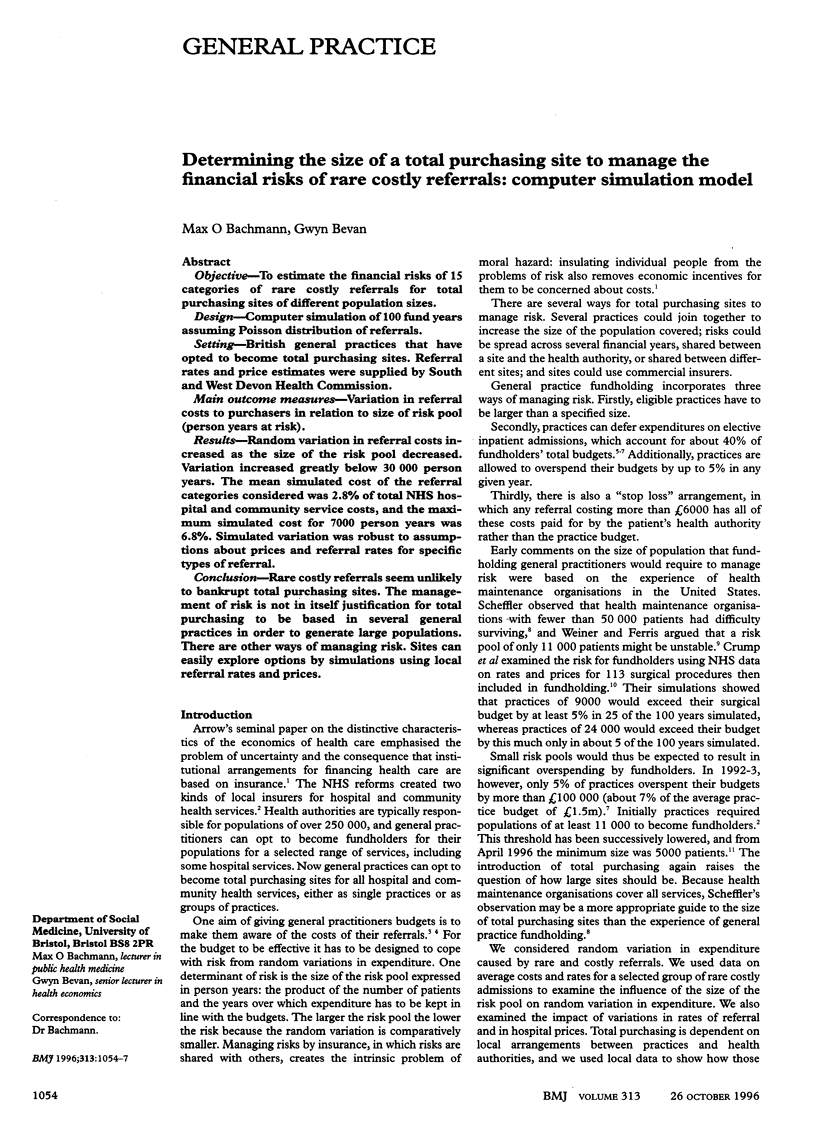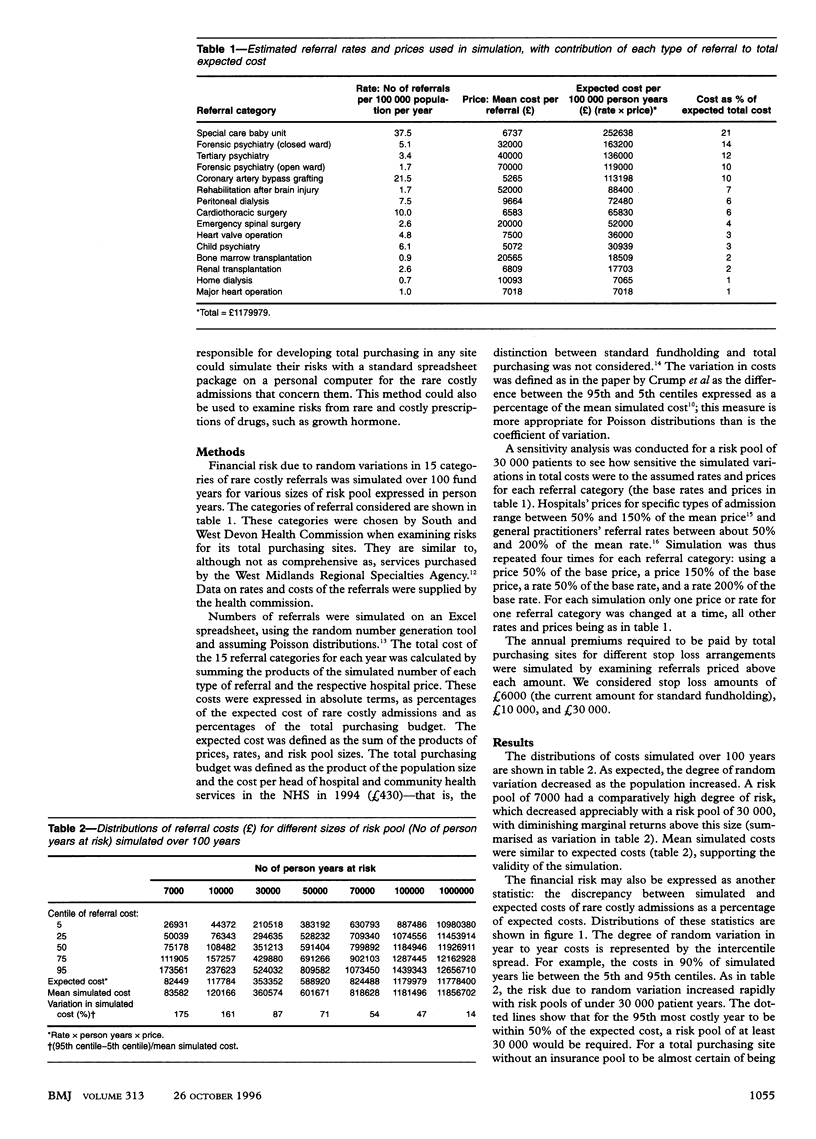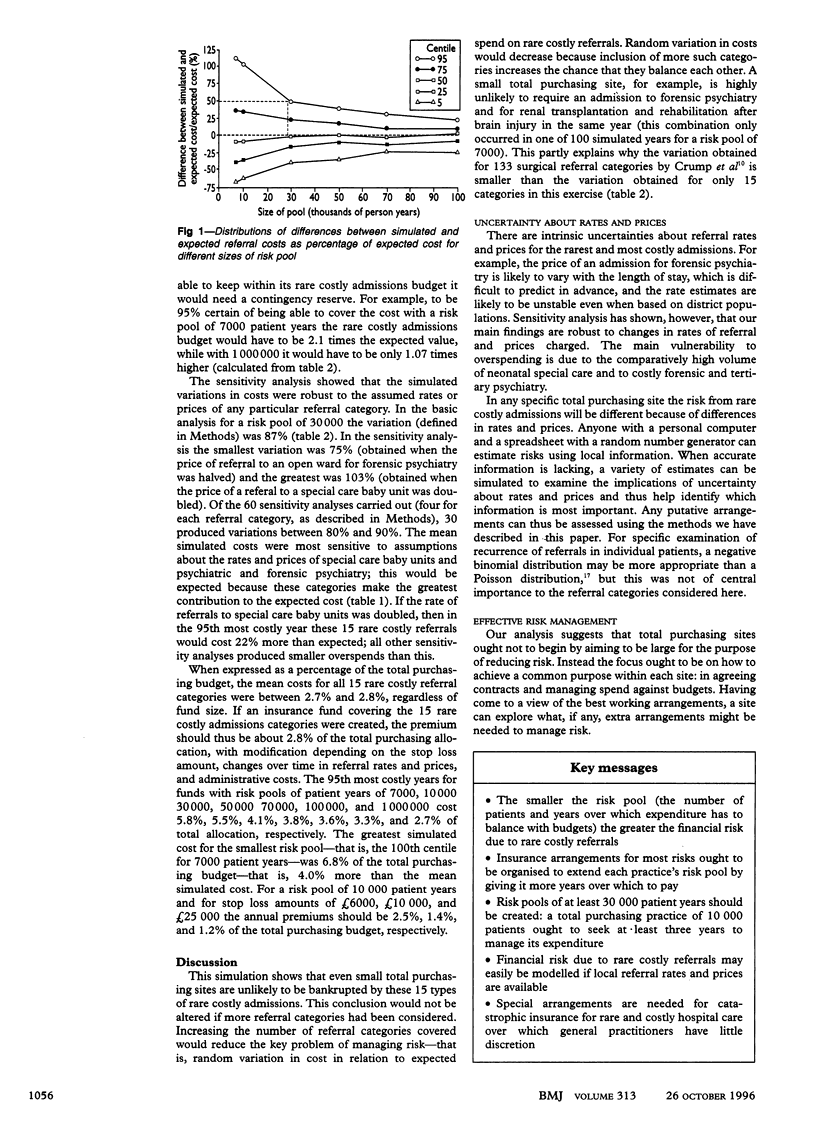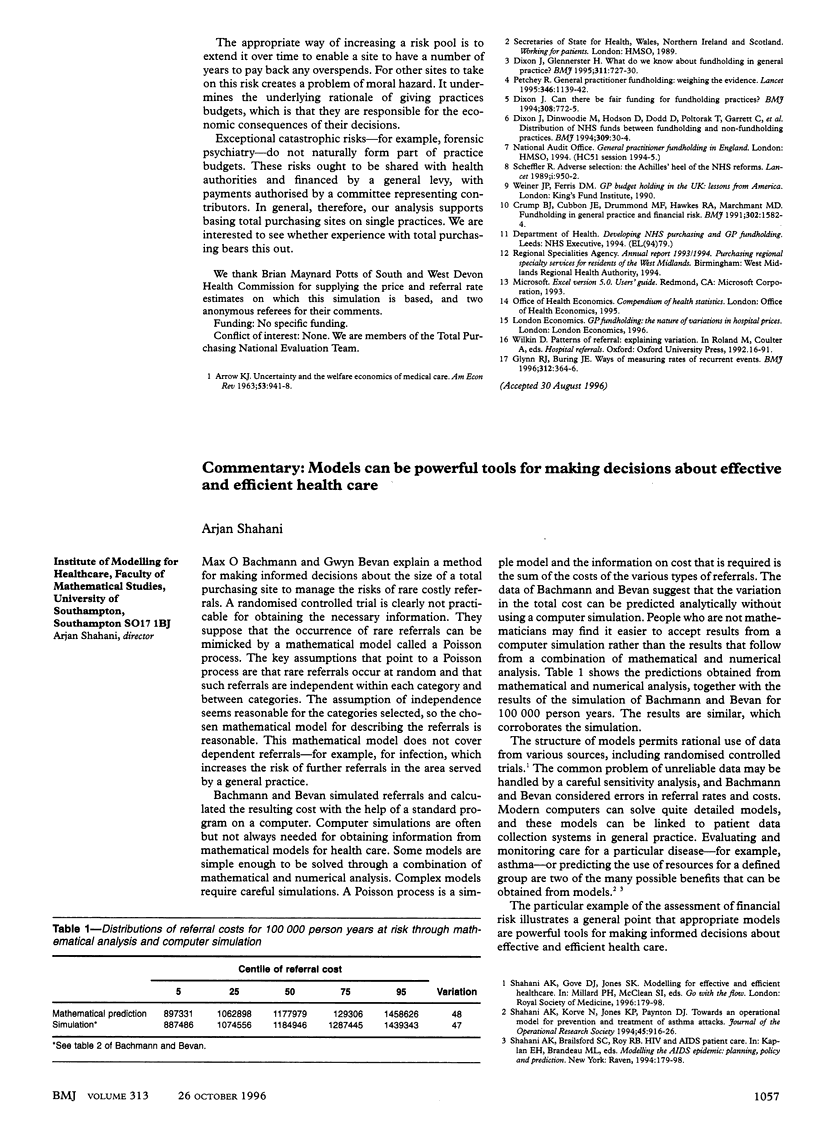Abstract
OBJECTIVE: To estimate the financial risks of 15 categories of rare costly referrals for total purchasing sites of different population sizes. DESIGN: Computer simulation of 100 fund years assuming Poisson distribution of referrals. SETTING: British general practices that have opted to become total purchasing sites. Referral rates and price estimates were supplied by South and West Devon Health Commission. MAIN OUTCOME MEASURES: Variation in referral costs to purchasers in relation to size of risk pool (person years at risk). RESULTS: Random variation in referral costs increased as the size of the risk pool decreased. Variation increased greatly below 30,000 person years. The mean simulated cost of the referral categories considered was 2.8% of total NHS hospital and community service costs, and the maximum simulated cost for 7000 person years was 6.8%. Simulated variation was robust to assumption about prices and referral rates for specific types of referral. CONCLUSION: Rare costly referrals seem unlikely to bankrupt total purchasing sites. The management of risk is not in itself justification for total purchasing to be based in several general practices in order to generate large populations. There are other ways of managing risk. Sites can easily explore options by simulations using local referral rates and prices.
Full text
PDF



Selected References
These references are in PubMed. This may not be the complete list of references from this article.
- Crump B. J., Cubbon J. E., Drummond M. F., Hawkes R. A., Marchment M. D. Fundholding in general practice and financial risk. BMJ. 1991 Jun 29;302(6792):1582–1584. doi: 10.1136/bmj.302.6792.1582. [DOI] [PMC free article] [PubMed] [Google Scholar]
- Dixon J. Can there be fair funding for fundholding practices? BMJ. 1994 Mar 19;308(6931):772–775. doi: 10.1136/bmj.308.6931.772. [DOI] [PMC free article] [PubMed] [Google Scholar]
- Dixon J., Dinwoodie M., Hodson D., Dodd S., Poltorak T., Garrett C., Rice P., Doncaster I., Williams M. Distribution of NHS funds between fundholding and non-fundholding practices. BMJ. 1994 Jul 2;309(6946):30–34. doi: 10.1136/bmj.309.6946.30. [DOI] [PMC free article] [PubMed] [Google Scholar]
- Dixon J., Glennerster H. What do we known about fundholding in general practice? BMJ. 1995 Sep 16;311(7007):727–730. doi: 10.1136/bmj.311.7007.727. [DOI] [PMC free article] [PubMed] [Google Scholar]
- Glynn R. J., Buring J. E. Ways of measuring rates of recurrent events. BMJ. 1996 Feb 10;312(7027):364–367. doi: 10.1136/bmj.312.7027.364. [DOI] [PMC free article] [PubMed] [Google Scholar]
- Petchey R. General practitioner fundholding: weighing the evidence. Lancet. 1995 Oct 28;346(8983):1139–1142. doi: 10.1016/s0140-6736(95)91805-1. [DOI] [PubMed] [Google Scholar]
- Scheffler R. Adverse selection: the Achilles heel of the NHS reforms. Lancet. 1989 Apr 29;1(8644):950–952. doi: 10.1016/s0140-6736(89)92520-8. [DOI] [PubMed] [Google Scholar]


